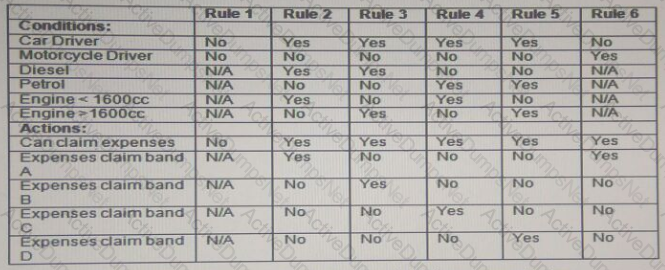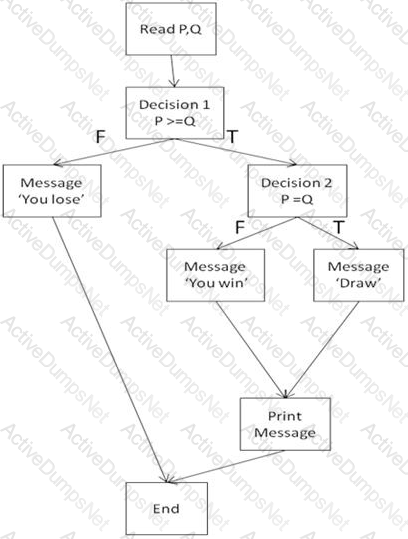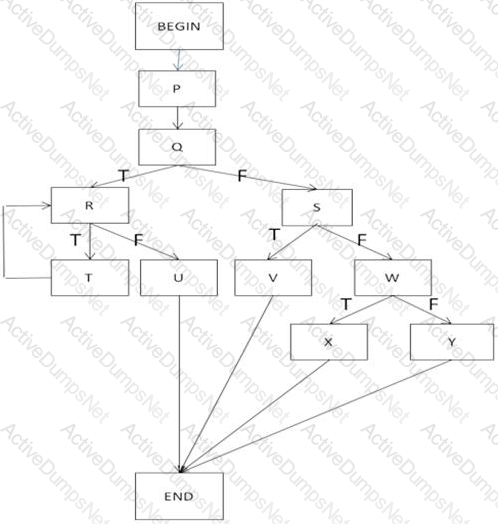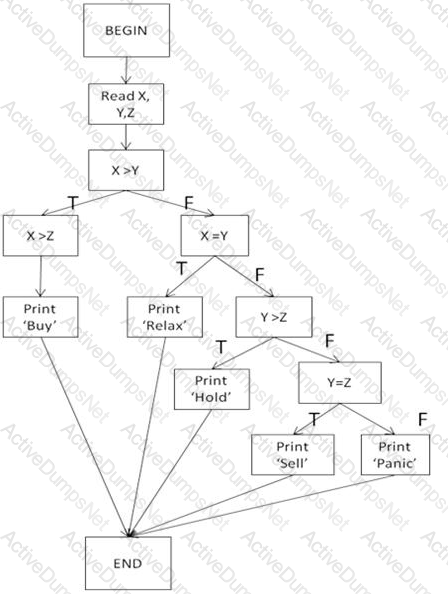ISTQB CTFL-Foundation ISTQB Certified Tester Foundation Level Exam Practice Test
ISTQB Certified Tester Foundation Level Questions and Answers
Which one of the following statements about testing techniques is TRUE?
Which of the following is NOT a valid use of decision coverage?
Which of the following options explain why it is often beneficial to have an independent test function in an organisation?

In the above State Table, which of the following represents an invalid transition?
A new testing tool has been selected for an organisation and a pilot project has successfully completed. The next step is to deploy the tool within the organization.
What is a key success factor in tool deployment?
Which of the following is a white-box test technique?
When can functional and structural testing BOTH be applied?
Why is measurement of code coverage Important?
Which of the following does NOT represent one of the three triggers for maintenance testing an operational system?
Which of the following would achieve the HIGHEST level of testing independence for a project's test level?
During the development of a software change for a system, the developer makes a mistake in his work, which leads to a fault in the code. Unfortunately the fault is not found by software testing and is released into live.
What is the definite consequence of this mistake?
Which of the following optionsBESTexplain the pesticide paradox principle of testing?
Debugging and Testing are key activities in the software development lifecycle.
Which of the following are 'Debugging' activities?
a) Identifying, a failure
b) Locating the cause of failure
c) Fixing the defect
d) Checking the fix has resolved the failure
Which of the following type of defect would NOT be typically found by using a static analysis tool?
Your company is developing a system with complex business rules and many branches in the structure of its code components. You need to choose one black box technique and one white box technique for test case design.
Which one of the following offers the BEST choice?
A booking system for a city bus service prices its fares according to the time of travel:
• Peak-time tariff starts at 0600 and finishes at 1000 am
• Off-peak tariff applies during all other times of service
• The bus service does not operate between 2300 and the start of the next day’s peak service
Note that all times mentioned are inclusive.
When applying the equivalence partitioning test design technique, which of the following options, shows test case inputs that each fall into a different equivalence partition?
Which of the following would you NOT expect to see on an incident report from test execution?

The decision table above shows a company's fuel expenses structure.
Which of the following Test Cases based on the decision table are Valid?
Test Case 1:
An employee who is not a car or motorcycle driver attempts to claim fuel expenses. Expected result: Expense claim not allowed.
Test Case 2:
An employee who drives a 1700cc diesel car attempts to claim fuel expenses. Expected result: Expense claim accepted at band C.
Test Case 3:
An employee who rides a motorcycle attempts to claim fuel expenses. Expected result: Expense claim accepted at band A.
Which option BEST describes how the level of risk is determined?
You are examining a document which gives the precise steps needed in order to execute a test.
What is the correct definition of this document?
Which of the following options describe the causal chain in the correct sequence?
A live defect has been found where a code component fails to release memory after it has finished using it.
Which of the following tools would have been the MOST effective at detecting this defect prior to live implementation?
Which of the following represents good testing practice for testers, irrespective of the software lifecycle model used?
Which of the following activities is appropriate to the test planning stage?
You have been asked to improve the way test automation tools are being used in your company.
Which one of the following is the BEST approach?
Which of the following would NOT be a common metric used for monitoring test preparation and execution?
When considering the roles of test leader and tester, which of the following tasks would NOT typically be performed by a tester?
The five parts of the fundamental test process have a broad chronological order. Which of the options gives three different parts in the correct order?
Which of the following are valid justifications for developers testing their own code during unit testing?
(i) Their lack of independence is mitigated by independent testing during system and acceptance testing.
(ii) A person with a good understanding of the code can find more defects more quickly using white-box techniques.
(iii) Developers have a better understanding of the requirements than testers.
(iv) Testers write unnecessary incident reports because they find minor differences between the way in which the system behaves and the way in which it is specified to work.
Which of the following is NOT part of configuration management..?
Who is responsible for conducting test readiness review..?
An input field takes the year of birth between 1900 and 2004. The boundary values for testing this field are:
Which pair of definitions is correct?
One Key reason why developers have difficulty testing their own work is:
What is the purpose of exit criteria?
Which of the following statements contains a valuable objective for a test team?
Complete statement and branch coverage means..?
The cost of fixing a fault:
A test management tool is most likely to integrate with which of the following tools?
How many test cases are necessary to cover all the possible sequences of statements (paths) for the following program fragment?
Assume that the two conditions are independent of each other : -if (Condition 1)then statement 1else statement 2if (Condition 2)then statement 3
Which of the following are most likely to be used when developing a test strategy or test approach?
(i) Failure-based approach
(ii)Test specification approach
(iii) Model-based approach
(iv)Finance-based approach
Which of the following is a non-functional requirement?
During the software development process, at what point can the test process start?
Which of the following defects is most likely to be found by a test harness?
Which of the following is correct?
Debugging is:
Which of the following are the typical defects found by static analysis tools?
a. Variables that are never used.
b. Security vulnerabilities.
c. Poor performance.
d. Unreachable code.
e. Business processes not followed.
What benefits do static analysis tools have over test execution tools?
Which of the following defines the expected result of a test?
What is important to do when working with software development models?
Which is the best definition of complete testing..?
What is the main purpose of use case testing?
What do you mean by “Having to say NO”..?
What do static analysis tools analyze?
Which of the following is the task of a Tester?
i. Interaction with the Test Tool Vendor to identify best ways to leverage test tool on the project.
ii. Prepare and acquire Test Data
iii. Implement Tests on all test levels, execute and log the tests.
iv. Create the Test Specifications
Which of the following test design techniques is not a black box technique?
Testers are often seen as the bearer of unwanted news regarding defects. What are effective ways to improve the communication and relationship between testers and others?
a)Communicate factual information in a constructive way.
b)Try to understand how the other person feels and why they react the way they do.
c)Always outsource testing activities.
d)Never record information that could be used to apportion blame to an individual or team.
Which of the following is a consideration when deploying test execution tools? [K1]
Which of the following are valid test objectives?
(i)Finding defects.
(ii)Gaining confidence about the level of quality and providing information.
(iii)Preventing defects.
(iv)Debugging the code.
Which of the test cases below will exercise both outcomes from decision 2? [K3]
Refer to the exhibit

Consider the following pseudo code:
1. Begin
2. Input X, Y
3. If X > Y
4. __Print (X, ‘is greater than’, Y)
5. Else
6. __Print (Y, is greater than or equal to’, X)
7. EndIf
8. End
What is the minimum number of test cases required to guarantee both 100% statement coverage and 100% decision coverage?
System testing is:
Which of the following are 'Exit Criteria?'
Which of the following is a valid objective of testing? [K1]
Dynamic Analysis Tools are used to:
Equivalence Partitioning is best defined as:
Which of the following would typically be identified using static analysis by tools? [K1]
A system calculates the amount of customs duty to be paid:
_ No duty is paid on goods value up to, and including, $2,000.
_ The next $8,000 is taxed at 10%.
_ The next $20,000 after that is taxed at 12%.
_ Any further amount after that is taxed at 17%.
To the nearest $, which of these groups of numbers fall into three DIFFERENT equivalence classes?
Which of the following would be appropriate test objectives for user acceptance testing of the first release of a new software product aimed at a general market and built using Agile methods? [K2]
a. To identify as many defects as possible
b. To maximise code coverage
c. To ensure the product works as expected
d. To assess the overall quality of the product
e. To determine the reliability of the product
Functional and structural tests are alternative test types that may be used separately or together at which test level? [K1]
The flow graph below shows the logic of a program for which 100% statement coverage and 100% decision coverage is required on exit from component testing. [K4]
The following test cases have been run:
Test Case 1 covering path P,Q,R,U
Test Case 2 covering path P,Q,S,V
Test Case 3 covering path P,Q,S,W,X
Test case 4 covering path P,Q,S,W,Y
Refer to the exhibit

Which of the following statements best characterises maintenance testing? [K2]
From the following list, which of the following apply to experience-based techniques? [K2]
a. Test cases are derived from a model of the problem to be solved or the software
b. Test cases are derived from the knowledge of the testers
c. The knowledge of testers, developers and users is used to drive testing
d. The internal structure of the code is used to derive test cases
Which from the following list are typically found to enable the review process to be successful? [K2]
a. Each review has clear defined objectives
b. The lower the number of defects, the better the review process
c. The right people for the review objective are involved
d. There is an emphasis on learning and process improvement
e. Management are not involved in the process at all
f. Checklists should not be used, as these slow down the process
g. Defects found are welcomed and expressed objectively
Which statement correctly describes debugging? [K2]
A bank is developing a new service that will be delivered via the web. The user interactions are defined as a set of use cases and the service is designed to be available continuously 24/7. In view of the challenging characteristics of the service the test manager has decided that the code should be thoroughly tested at component level.
Which of the following test types will be required during the development? [K2]
Which of the following statements about use-case testing are most accurate?
(i)In a use-case diagram an actor represents a type of user.
(ii)Use-cases are the most common test basis for unit testing.
(iii)A use-case describes interactions between actors.
(iv)An actor is always a human user that interacts with the system.
(v)Test cases can be based on use-case scenarios.
(vi)Use-case testing will often identify gaps not found by testing individual components.
What is the value of static code analysis?
Which of the following test cases will ensure that the statement ‘Print ‘Hold’’ is exercised? [K3]
Refer to the exhibit

What are metrics NOT used for?
Which of the following test design techniques is classified as a structure-based (white box) technique? [K1]
Which of the following test organizations has the highest level of independence?
